Cacio e Pepe
This post may contain affiliate links. Read my full disclosure policy.
Cacio e pepe is a deceptively simple dish packed with flavor. Featuring pasta, Pecorino Romano cheese, and black pepper, this version uses a foolproof technique to ensure a creamy, clump-free sauce every time!

One of the simplest and most beloved pasta dishes from Rome, cacio e pepe literally translates to “cheese and pepper.” Pronounced kaa-chee-ow-ee-peh-pay, the traditional dish calls for just three ingredients: coarsely ground black pepper, finely grated Pecorino Romano, and pasta. Some modern versions, like this one, add a little olive oil, butter, or cream for extra richness. The magic happens when starchy pasta water is mixed in, creating a rich, creamy sauce that clings to the pasta—think of it as Italy’s version of mac and cheese, but with a bold, peppery kick. Perfect for two, this cacio e pepe recipe is a quick, no-fuss meal, but can easily be doubled if needed!
“Made this last night and it was great. I’ve tried other recipes for cacio e pepe and the sauce clumped up and didn’t work. Your method worked beautifully!”
The Method
Traditionally, making cacio e pepe involves gradually adding cheese and pasta water to the cooked noodles while stirring vigorously to create that creamy, emulsified sauce. But the reality is that often clumps and sticks to the pan no matter how careful you are. To avoid that frustration, I borrow a trick from Italian chef Luciano Monosilio: blend the pasta water and cheese together before adding it to the pasta. This way, you still need to keep an eye on the heat, but it’s much easier to get that smooth, velvety sauce without worrying about clumping.
What You’ll Need To Make Cacio e Pepe
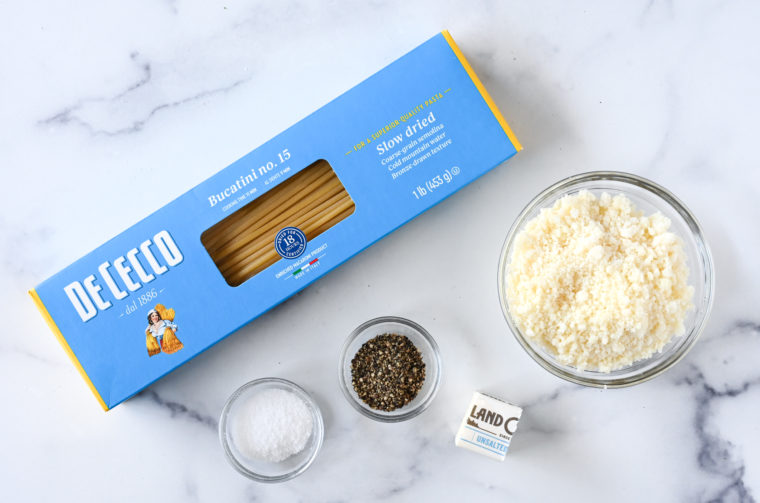
- Pasta: The recipe calls for bucatini, spaghetti, or tonnarelli. Bucatini (also known as perciatelli) resembles spaghetti but is thicker and has a small hole running through the center—hence the name “buco,” which means “hole” in Italian. Tonnarelli, on the other hand, is a long, thick pasta with square edges, traditionally used in Roman cuisine and ideal for soaking up rich sauces. Spaghetti is a great alternative if you can’t find the other two.
- Pecorino Romano: A sharp, salty sheep’s milk cheese that provides bold flavor. It’s the best choice for this dish, as it adds more intensity than Parmesan or Parmigiano-Reggiano. While the two cheeses are sometimes interchangeable in recipes, I recommend sticking with the Pecorino cheese here, as it has a bolder flavor. Pre-grated cheese is perfectly fine to use in this recipe—that’s what I use!
- Freshly Ground Black Pepper: Adds a distinctive peppery kick. Use coarsely ground pepper for the best texture and flavor. I’ve given a range depending on how peppery you like your pasta; add to taste.
- Butter: While not a traditional ingredient in cacio e pepe, the butter is used to “bloom” the fresh ground pepper before mixing it in with the pasta. It also makes for a creamier sauce without diluting the other flavors.
- Jump to the printable recipe for precise measurements
Step-by-Step Instructions
In a Dutch oven or large pot, bring 2 quarts of water and 1 teaspoon of salt to a boil. Add the pasta and cook according to package instructions until al dente.
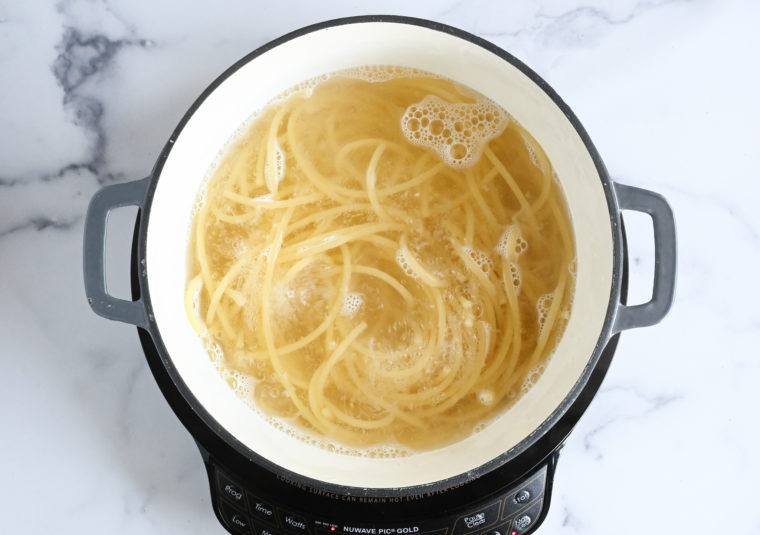
Reserve 1 cup of the pasta cooking water and drain.
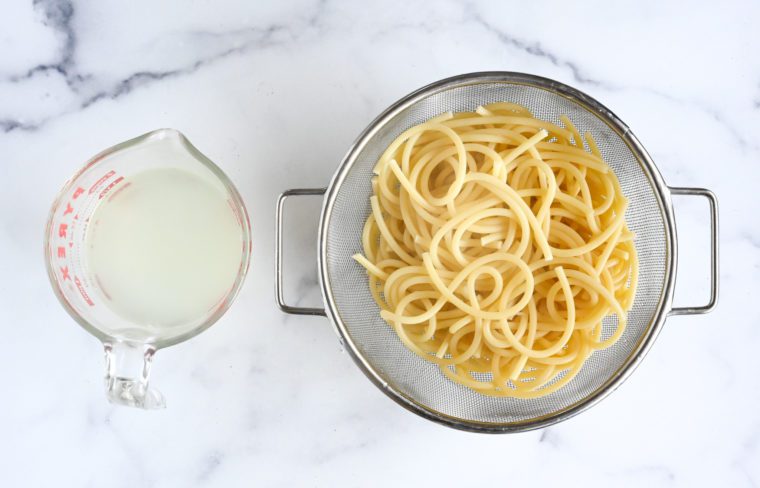
Set the same pot over low heat and melt the butter. Add the pepper.
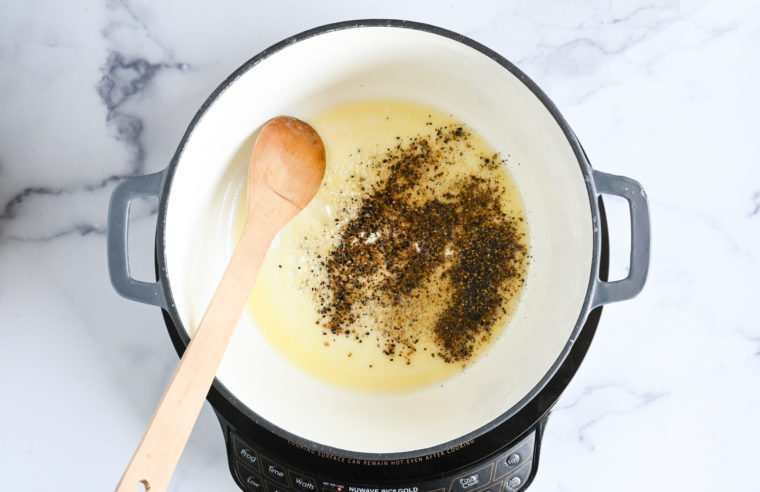
Cook, stirring constantly, until fragrant, about 1 minute.
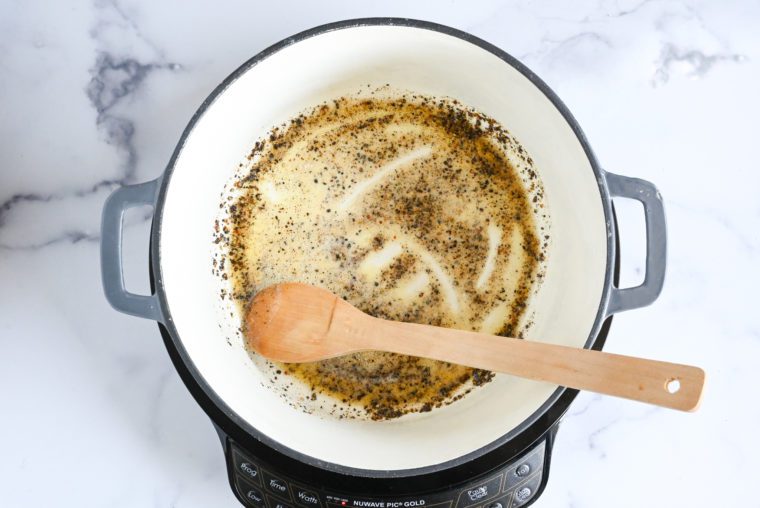
Add the drained pasta to the pot and toss to coat evenly. Remove the pot from the heat.
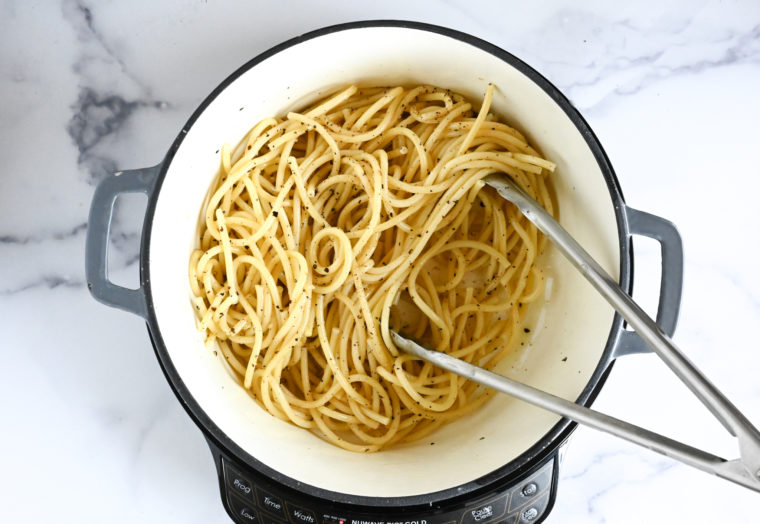
In a blender, combine the cheese and ⅔ cup of the hot pasta water.
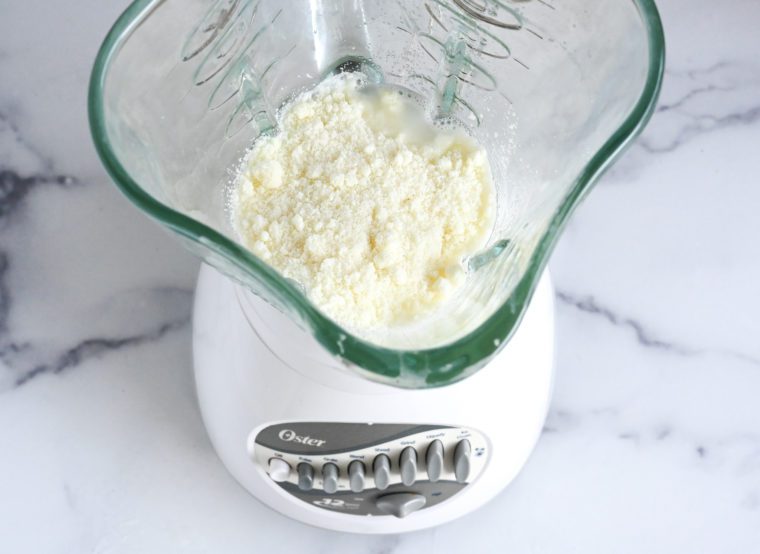
Blend until smooth and creamy, 10 to 15 seconds.
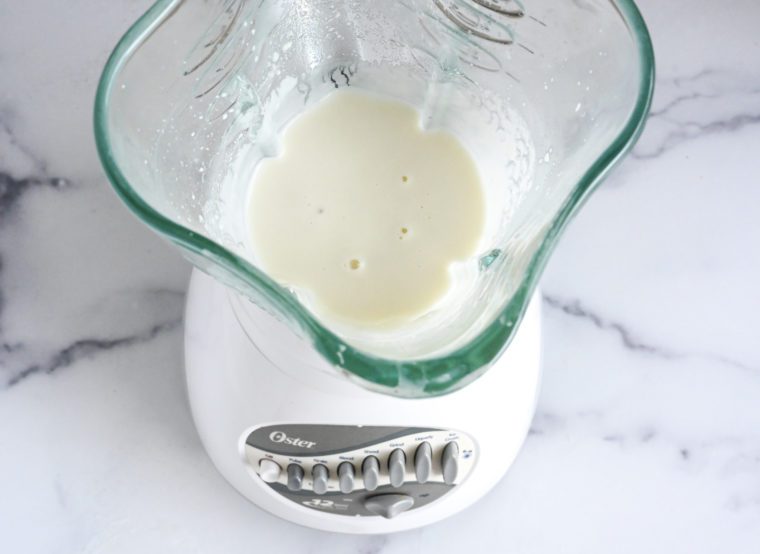
Add the sauce to the pasta in the pot and toss with tongs.
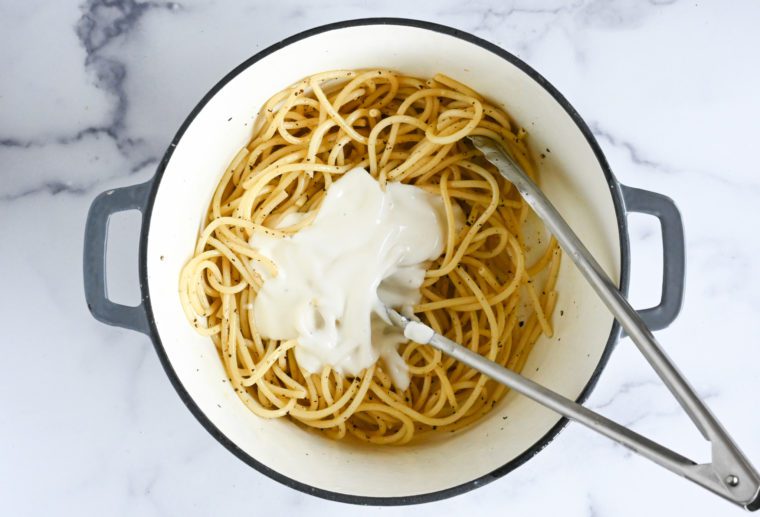
Place the pot back over low heat and cook, stirring constantly with the tongs, until the sauce is the consistency of a thin cream sauce, a few minutes. Add more of the reserved pasta water to thin the sauce only if necessary. Be careful at this stage: if the sauce gets too hot, it will start to clump up and stick to the pot and tongs.
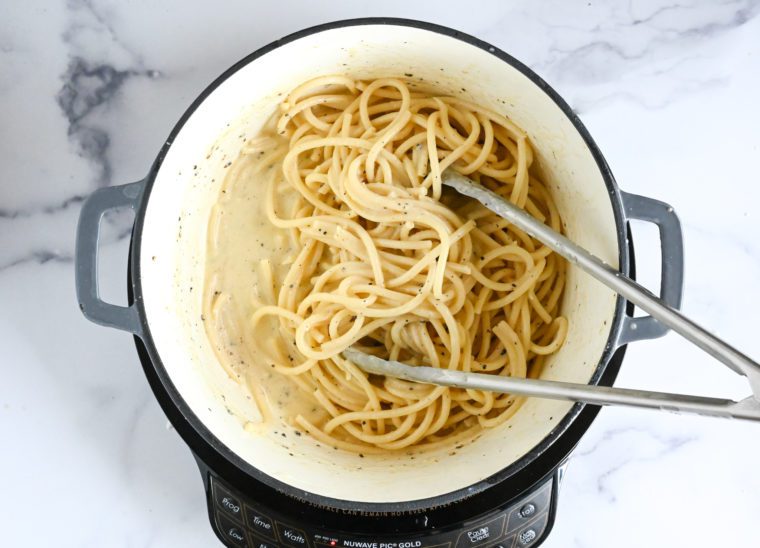
Once the sauce is the right consistency, immediately transfer the pasta to bowls and serve. Pass more cheese and pepper at the table, if desired.

You May Also Like
Cacio e Pepe
Cacio e pepe is a deceptively simple dish packed with flavor. Featuring pasta, Pecorino Romano cheese, and black pepper, this version uses a foolproof technique to ensure a creamy, clump-free sauce every time!
Ingredients
- Salt
- 8 oz bucatini, spaghetti, or tonnarelli
- 2 tablespoons unsalted butter
- 1½ - 2 teaspoons freshly ground black pepper, depending on how peppery you like your pasta
- 1 cup finely grated Pecorino Romano cheese
Instructions
- In a Dutch oven or large pot, bring 2 quarts of water and 1 teaspoon of salt to a boil. Add the pasta and cook according to package instructions until al dente. Reserve 1 cup of the pasta cooking water and drain.
- Set the same pot over low heat and melt the butter. Add the pepper and cook, stirring constantly, until fragrant, about 1 minute. Add the drained pasta to the pot and toss to coat evenly. Remove the pot from the heat.
- In a blender, combine the cheese and ⅔ cup of the pasta cooking water. Blend until smooth and creamy, 10 to 15 seconds. Add the sauce to the pasta in the pot and toss with tongs. Place the pot back over low heat and cook, stirring constantly with the tongs, until the sauce is the consistency of a thin cream sauce, a few minutes. Add more of the reserved pasta water to thin the sauce only if necessary. Be careful at this stage: if the sauce gets too hot, it will start to clump up and stick to the pot and tongs. Once the sauce is the right consistency, immediately transfer the pasta to bowls and serve. Pass more cheese and pepper at the table, if desired.
Pair with
Nutrition Information
Powered by ![]()
- Per serving (2 servings)
- Calories: 785
- Fat: 31 g
- Saturated fat: 19 g
- Carbohydrates: 89 g
- Sugar: 4 g
- Fiber: 4 g
- Protein: 36 g
This website is written and produced for informational purposes only. I am not a certified nutritionist and the nutritional data on this site has not been evaluated or approved by a nutritionist or the Food and Drug Administration. Nutritional information is offered as a courtesy and should not be construed as a guarantee. The data is calculated through an online nutritional calculator, Edamam.com. Although I do my best to provide accurate nutritional information, these figures should be considered estimates only. Varying factors such as product types or brands purchased, natural fluctuations in fresh produce, and the way ingredients are processed change the effective nutritional information in any given recipe. Furthermore, different online calculators provide different results depending on their own nutrition fact sources and algorithms. To obtain the most accurate nutritional information in a given recipe, you should calculate the nutritional information with the actual ingredients used in your recipe, using your preferred nutrition calculator.




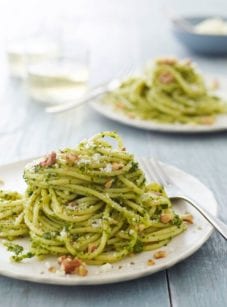
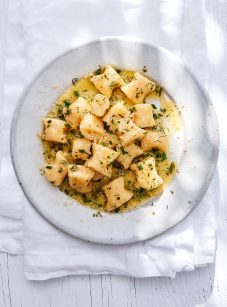
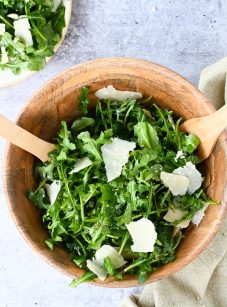
It was a WIN for the entire family! So delicious and easy to follow.
I don’t have a regular blender – wondering if an immersion blender will work?
Hi Denise, Unfortunately, you really need a blender for this. If you have a food processor, that would work too.